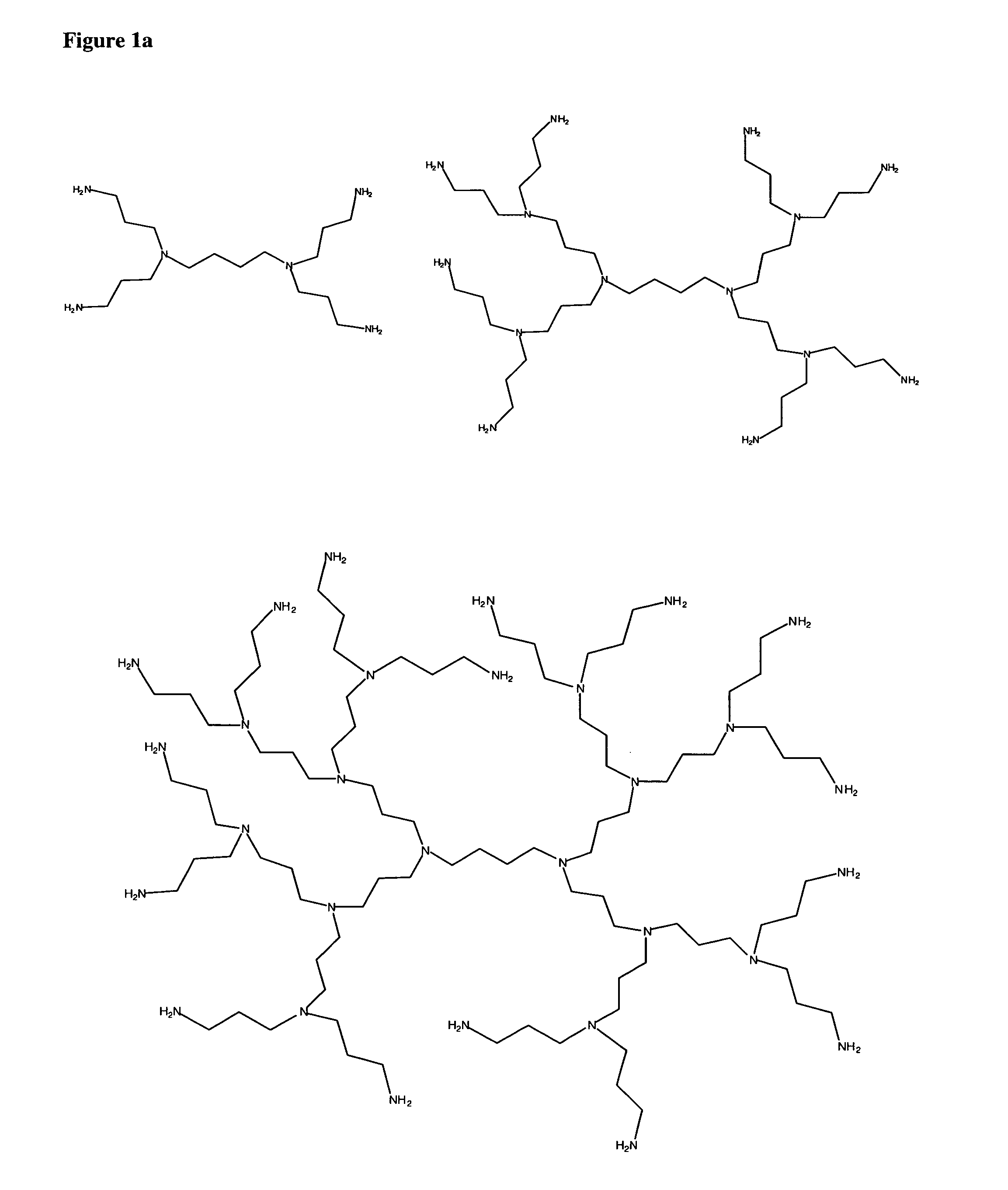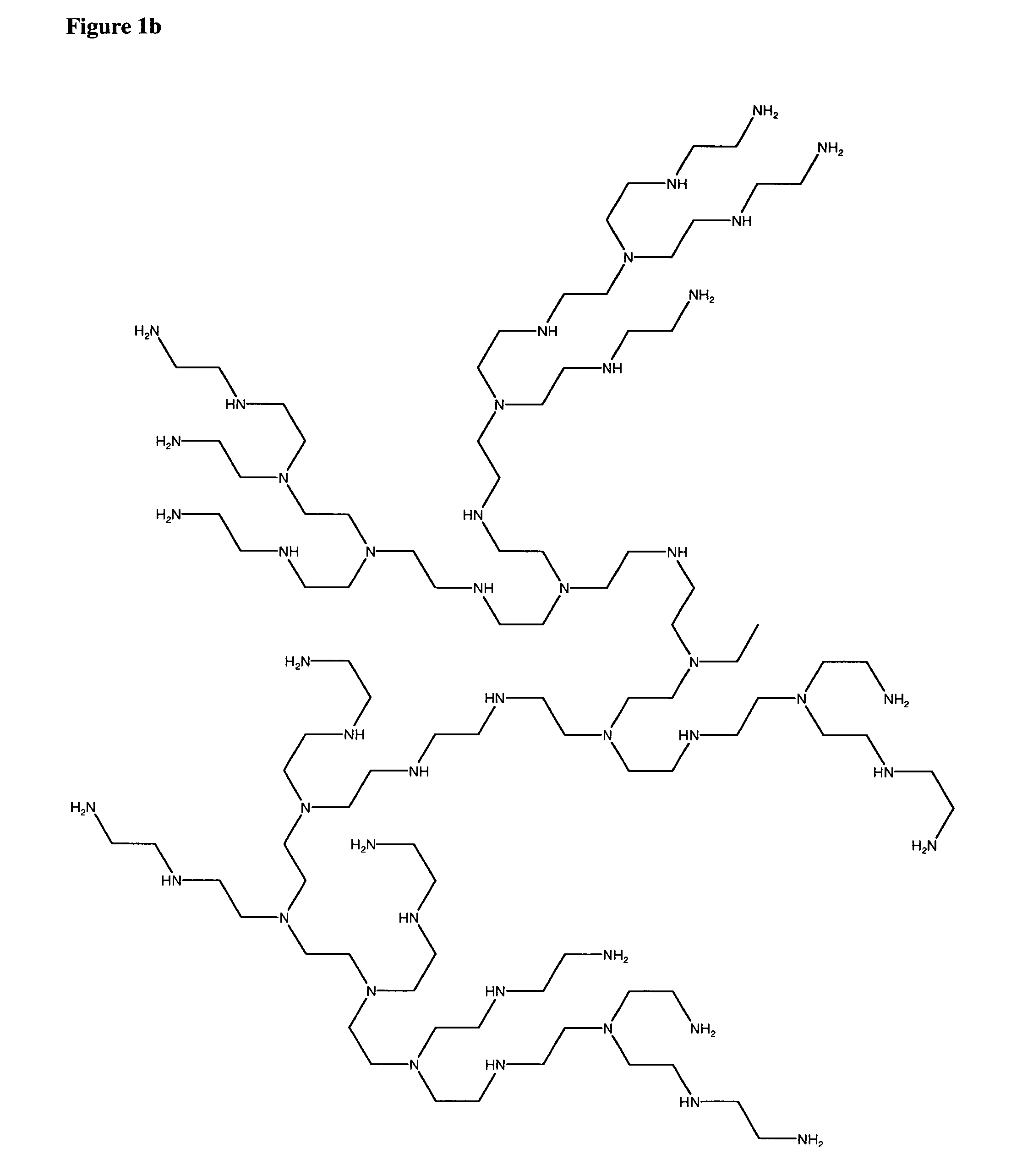Crosslinked gels comprising polyalkyleneimines, and their uses as medical devices
a technology of polyalkyleneimi and crosslinked gel, which is applied in the direction of prosthesis, bandages, synthetic polymeric active ingredients, etc., can solve the problems of difficult repair of liver lacerations, weak cohesive strength of liver tissue, and inability to meet the needs of sutures and staples
- Summary
- Abstract
- Description
- Claims
- Application Information
AI Technical Summary
Benefits of technology
Problems solved by technology
Method used
Image
Examples
example 1
Synthesis of Difunctional N-Hydroxysuccinimide Activated PEGs from Difunctional PEG-OH with Internal Ester Linkages
[2457]A general synthetic process is as follows, the detailed list of various PEGs, linkages, and amounts of various reagents are listed in the table. In general, difunctional PEG-OH was added to a 3-neck, dry round bottom flask affixed with a nitrogen / vacuum line, heating apparatus and stirring mechanism. While being stirred, the flask was heated to ˜120° C. until all PEG had melted. The flask was then allowed to stir for 30 minutes under high vacuum, with the temperature being lowered to ˜80° C. for the duration of the reaction. Prior to any subsequent reagent addition, the flask was purged three times with nitrogen. To the flask, a catalytic amount of a diacid acid was added and allowed to dissolve. Next, an excess of the diacid anhydride was added to the flask and the system was put under nitrogen. The reaction was allowed to stir under nitrogen at 80° C. for a mini...
example 2
Synthesis of Difunctional N-Hydroxysuccinimide Activated PEGs (Succinimidyl Propionic Acid) from Difunctional PEG-OH
[2460]A general synthetic process is as follows, the detailed list of various PEG molecular weights and amounts of various reagents are listed in the table. In general, difunctional PEG-OH was added to a 3-neck, dry round bottom flask affixed with a cooling apparatus and stirring mechanism. While stirring, a volume of deionized water equal to the mass of PEG-OH was added until dissolved. The flask was then cooled to approximately 0° C. and potassium hydroxide (KOH) pellets were added. The reaction was left to stir until the pellets were dissolved. The appropriate excess of acrylonitrile was then added via syringe pump over 1.5 hours, and then left stirring for an additional 1.0 hour after addition. The solution was transferred to a liquid-liquid extractor and extracted with DCM for 6-12 hours. The collected DCM used in the extractor was concentrated before a volume of ...
example 3
Synthesis of (Succinic Acid Cesium Salt)2-PEG
[2462]PEG succinimidyl succinate (1 g, 0.3 mmol) was dissolved in water and the pH was adjusted to 7.5 with CsCO3. The solvent was removed to obtain the pure compound (99%).
PUM
| Property | Measurement | Unit |
|---|---|---|
| weight average molecular weight | aaaaa | aaaaa |
| weight average molecular weight | aaaaa | aaaaa |
| osmolality | aaaaa | aaaaa |
Abstract
Description
Claims
Application Information
 Login to View More
Login to View More - R&D
- Intellectual Property
- Life Sciences
- Materials
- Tech Scout
- Unparalleled Data Quality
- Higher Quality Content
- 60% Fewer Hallucinations
Browse by: Latest US Patents, China's latest patents, Technical Efficacy Thesaurus, Application Domain, Technology Topic, Popular Technical Reports.
© 2025 PatSnap. All rights reserved.Legal|Privacy policy|Modern Slavery Act Transparency Statement|Sitemap|About US| Contact US: help@patsnap.com



